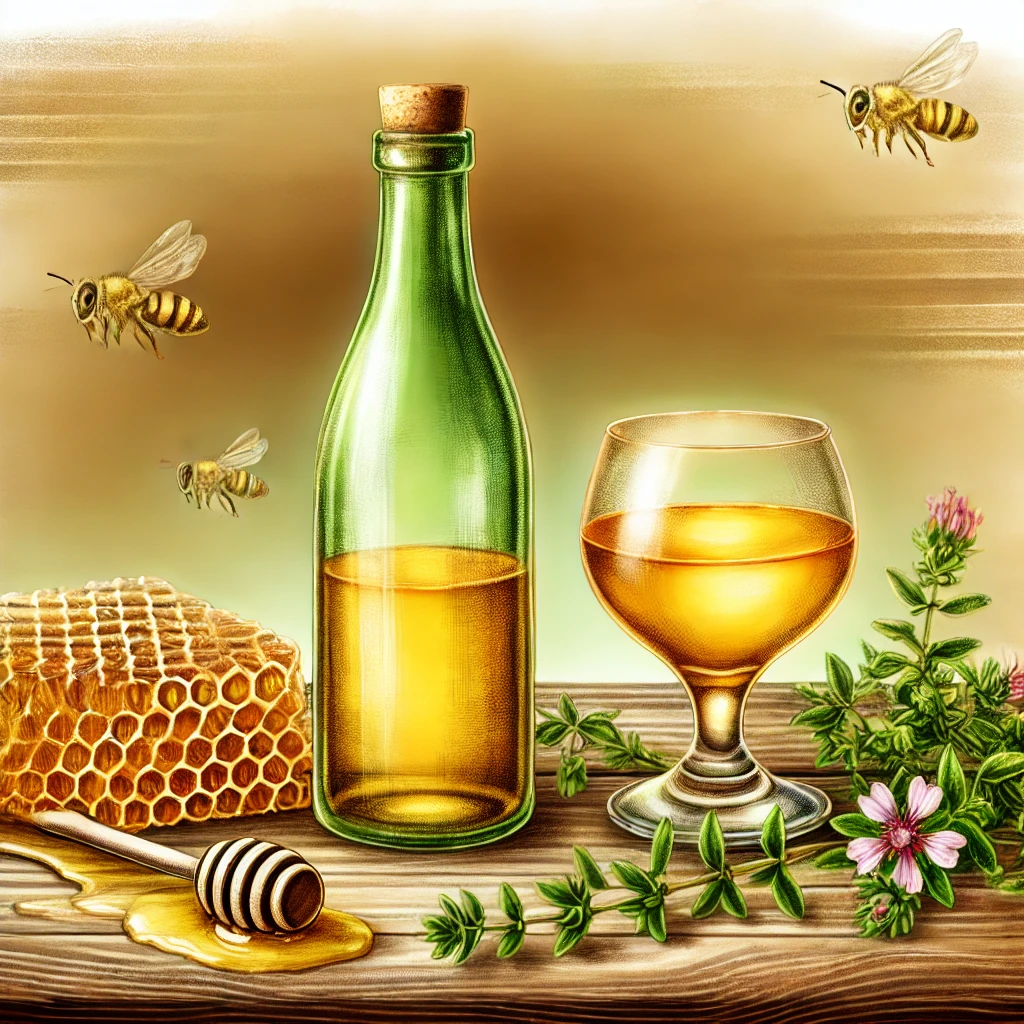What is Mead? A Comprehensive Guide to the Ancient Honey-Based Beverage
Mead is one of the oldest alcoholic beverages known to humanity, made by fermenting honey with water. Sometimes referred to as “honey wine,” mead has been enjoyed for thousands of years by cultures across the globe. It ranges in flavor, sweetness, and alcohol content, depending on the type of honey, fermentation process, and added ingredients like fruits, spices, or herbs. The beverage has seen a resurgence in recent years as craft brewers and enthusiasts rediscover and reinvent this ancient drink.
In this guide, we’ll explore the origins of mead, its various types, the brewing process, and its cultural significance.
1. Origins and History of Mead
Mead has a rich history that dates back to ancient civilizations. Archaeological evidence suggests that mead was first created more than 4,000 years ago, with early traces found in ancient China, India, Greece, and Africa. Known as the “nectar of the gods,” mead was often associated with myths and legends, particularly in Norse, Greek, and Celtic cultures, where it symbolized strength, wisdom, and divine favor.
Notable Historical Uses:
- Norse Mythology: In Norse mythology, mead was believed to be a divine drink made by the gods, providing wisdom and poetic inspiration to those who consumed it.
- Greek and Roman Influence: The Greeks and Romans enjoyed mead, especially before grape wine became prevalent. Ancient Greek texts often reference mead as a sacred drink.
- Africa’s Tej: In Ethiopia, a traditional form of mead called tej is still widely consumed. Tej is made with honey and a local herb called gesho, which serves as a bittering agent similar to hops in beer.
2. How Mead is Made
The core ingredients in mead are honey, water, and yeast. The process begins by mixing honey and water, creating a must (the initial mixture before fermentation). Yeast is then added to ferment the sugars in the honey, producing alcohol and carbon dioxide. The fermentation process can last anywhere from a few weeks to several months, depending on the type of mead being made and the desired flavor profile.
Key Steps in Mead Making:
- Mixing the Must: Combine honey and water in a container to create the initial must. The honey-to-water ratio determines the sweetness and potential alcohol content.
- Adding Yeast: Add yeast to start fermentation. Different yeast strains can produce distinct flavors, influencing the final taste of the mead.
- Fermentation: Let the mixture ferment, typically in an airtight container, for a set period. During this time, the yeast consumes the honey’s sugars, producing alcohol.
- Aging: After fermentation, mead is often aged to develop complex flavors. Aging can last from several months to years, with some types of mead improving significantly with time.
3. Types of Mead
Mead has many variations, categorized by additional ingredients or flavoring agents added to the honey-water mixture. Some of the main types of mead include:
a. Traditional Mead
Traditional mead is made with only honey, water, and yeast, showcasing the honey’s natural flavors without any added ingredients. This basic form allows the distinct characteristics of the honey to stand out.
b. Melomel
Melomel is a type of mead that includes fruits in the fermentation process. The fruits add natural sugars, colors, and flavors to the mead. Common fruits used in melomel include apples, berries, cherries, and peaches.
c. Metheglin
Metheglin mead is flavored with herbs and spices, such as cinnamon, cloves, ginger, and rosemary. The term “metheglin” comes from the Welsh word for medicine, as these meads were originally brewed with medicinal herbs.
d. Cyser
Cyser is a blend of mead and apple cider, made by fermenting honey and apple juice together. It is particularly popular in regions where apples are abundant, resulting in a beverage that combines the flavors of honey and apple.
e. Pyment
Pyment is a blend of mead and grape wine, made by fermenting honey and grape juice together. It has a rich, full-bodied flavor profile, influenced by both the honey and the grapes.
f. Braggot
Braggot is a hybrid of mead and beer, combining honey with malted barley or hops. Originally brewed by Celtic tribes, braggot retains the flavors of both honey and malt, often resulting in a slightly hoppy, sweet beverage.
4. Flavor Profiles and Alcohol Content
Mead has a wide range of flavor profiles, depending on the type of honey, fermentation process, and added ingredients. Honey from different flowers produces distinct flavors, which can range from light and floral to dark and rich. The alcohol content of mead generally varies between 8% and 20%, with sweeter meads typically having a lower alcohol content than dry meads.
Factors Affecting Mead Flavor:
- Type of Honey: Clover honey produces a mild flavor, while buckwheat honey is much stronger and more robust.
- Additional Ingredients: Fruits, spices, and herbs each bring unique tastes and aromas to the mead, creating variations in sweetness, acidity, and complexity.
- Fermentation Length: Longer fermentation can lead to higher alcohol content and a drier finish, while shorter fermentation preserves some of the sweetness of the honey.
5. Health Benefits and Myths Surrounding Mead
Mead has long been associated with health benefits, partly due to its use in traditional medicine and its reputation as a “healing” drink. While the medicinal value of mead is not scientifically proven, honey contains antioxidants, vitamins, and antibacterial properties. These beneficial properties can sometimes be retained in mead, particularly in varieties that use raw honey.
Popular Myths:
- Aphrodisiac Qualities: Mead has historically been thought to have aphrodisiac properties, which is why it is sometimes associated with the “honeymoon” tradition.
- Longevity and Health: Some ancient cultures believed that drinking mead could extend life and improve health, though these claims remain unsubstantiated by modern science.
6. Mead in Modern Culture
Mead has experienced a renaissance in recent years, with an increasing number of craft meaderies and brewers experimenting with flavors and brewing techniques. In many parts of the world, mead is now available in various forms, from traditional bottles to canned versions, making it accessible to a new generation of drinkers. Modern brewers have expanded the traditional mead categories, experimenting with flavors and infusions that appeal to contemporary tastes.
Craft meaderies and brewing events are also growing in popularity, giving enthusiasts a chance to taste and learn about different styles of mead. Some regions, such as the United States, have witnessed a rise in festivals dedicated to mead, where brewers share innovative new flavors, pushing the boundaries of this ancient beverage.
Conclusion
Mead, with its ancient roots and versatile flavors, offers a unique drinking experience that blends tradition with creativity. From the simple elegance of traditional mead to the fruity richness of melomel and the herbal complexity of metheglin, mead offers something for every palate. As craft brewers continue to innovate, mead remains an exciting choice for those looking to explore the world of honey-based beverages.
Whether you’re enjoying a bottle of classic mead or trying a modern, fruit-infused variety, mead represents a timeless connection to ancient customs and culinary history, reimagined for today’s tastes.






